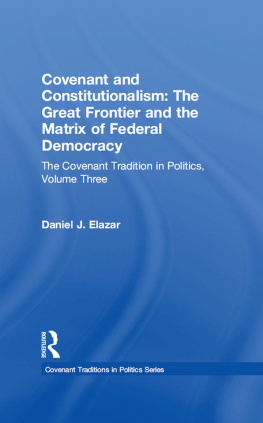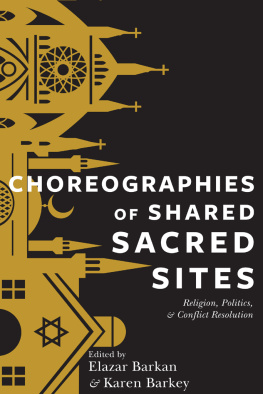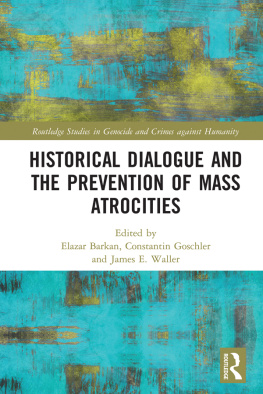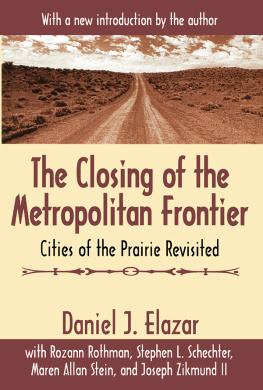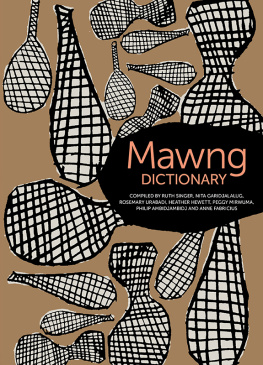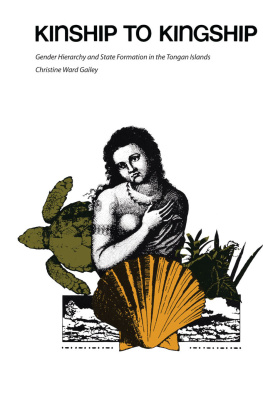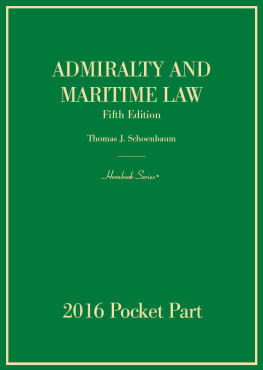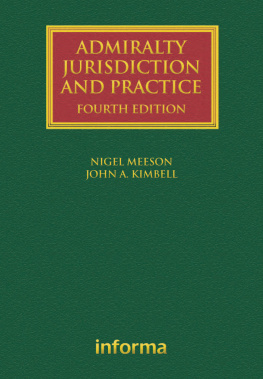KINSHIP in the ADMIRALTY ISLANDS
KINSHIP in the ADMIRALTY ISLANDS
Margaret Mead
With a new introduction by
Jeanne Guillemin
Originally published in 1934 by The American Museum of Natural History, New York City.
Published 2002 by Transaction Publishers
Published 2017 by Routledge
2 Park Square, Milton Park, Abingdon, Oxon OX 14 4RN
711 Third Avenue, New York, NY 10017
Routledge is an imprint of the Taylor and Francis Group, an informa business
New material this edition copyright 2002 by Taylor & Francis.
All rights reserved. No part of this book may be reprinted or reproduced or utilised in any form or by any electronic, mechanical, or other means, now known or hereafter invented, including photocopying and recording, or in any information storage or retrieval system, without permission in writing from the publishers.
Notice:
Product or corporate names may be trademarks or registered trademarks, and are used only for identification and explanation without intent to infringe.
Library of Congress Catalog Number: 00-068279
Library of Congress Cataloging-in-Publication Data
Mead, Margaret, 1901-1978
Kinship in the Admiralty Islands / Margaret Mead, with a new introduction by Jeanne Guillemin.
p. cm.
Includes bibliographical references.
ISBN 0-7658-0764-5 (pbk.: alk. paper)
1. Manus (Papua New Guinea people)Kinship. 2. Manus (Papua New Guinea people)Social life and customs. 3. KinshipPapua New GuineaAdmiralty Islands. 4. Admiralty Islands (Papua New Guinea)Social life and customs. I. Title.
DU740.42.M3952001
306.89958dc21
00-068279
ISBN 13: 978-0-7658-0764-9 (pbk)
Contents
ILLUSTRATIONS
TEXT FIGURES
1. Map of the Admiralty Islands
2. Diagram of the Village of Peri showing House Ownership, Gentile Membership, and Residence
3. Diagram of the Village of Peri as its Inhabitants conceptualize the Localization of Gentes within the Village
4. Diagrammatic Representation of a Matankor Village on the Island of Lou, showing Formal Arrangement of House Sites, Gentile Men's Houses, and Gentile Dancing Poles
5. Diagrammatic Representation of Crow and Omaha Types of Kinship System
6. Diagram showing Dominant and Submerged Descent Affiliations
7. Diagram illustrating the Dependence of patandrusun Relationships upon Residence
8. Diagram showing Structure of Mixed Descent Groups
9. Diagram showing Terminology used between the Lines of Brother and Sister
10. Diagram illustrating Terminological Usage between Males within the Gens
11. Illustrative Genealogy
12. Diagram showing Terminology used between Female Siblings and Female Parallel Cousins
13. Diagram showing the Prescribed Marriage
14. Diagram showing the Relationships between Brothers-in-Law where the Ideal Marriage Arrangements are made
15. Genealogy to illustrate Terminology used by Molung of Lo Gens
16. Paliau's Genealogy as he Originally gave it
17. Paliau's Real Genealogy
Margaret Meads fieldwork in the Admiralty Islands, in 1928-29, was her second venture into the exotic. She had left New York before her first book Coming of Age in Samoa was published to wide acclaim; knowledge of her celebrity would reach her by paqueboat months later. She was just turning 27, her first marriage (to sociology graduate student Luther Cressman) was behind her, and her second marriage, to her partner in this new field work, Reo Fortune, was brand new. The young couple had hastily stopped in Auckland to exchange wedding vows. Then they made their serendipitous way via Sydney to the remote New Guinea island of Manus and the coastal village of Peri (also written as Pere), chosen largely because their boy guide happened to live there.
After her first, solo experience in Samoa, Mead would never again go alone into fieldwork. With Dr. Fortune, a New Zealander, she would in 1931-1933 rambunctiously seek other remote sites in New Guinea. Later, she and her third husband, Gregory Bateson, would do research in Bali. In those years, the collective sense of anthropologists was that indigenous cultures would be obliterated by larger historical forces; therefore the details of these fragile cultures had to be recorded as soon and as accurately as possible. Although scientific disinterest was the ideal, Mead from the start levied judgments on native customs, with praise for some cultural forms and with disdain for others. Among the Manus, she and Fortune found a society often rent by antagonisms and they did not hesitate to record them. Fortune had just finished his classic The Sorcerers of Dobu, the ethnography of a culture beset by hostility and conflict, if not paranoia. In Coming of Age in Samoa, Mead had described a sensual, joyful culture, but she also included an appendix on The Mentally Defective and the Mentally Diseased. She was not above describing two of her young female informants as delinquents, while at the same time seeming to enjoy the effects a hoyden could have on a conformist community.
Nor was Mead blind to the wider and corrupt colonial context of this small village of Peri, one among thousands in Melanesia, where deracinated Joseph Conrad types could still find a niche.
Such flimsy structures of a hundred or so white men, govern and exploit this vast country, find gold, plant great plantations, trade for shell, hide their failures in other lands, drink inordinately, run into debt, steal each others wives, go broke, commit suicide, or get rich and marry anything at all in the way of a woman who drifts into the territory. But underneath this superstructure strange things go on. The recruiting system, which began as black birding, a straight and out kidnaping and slavery, now consists in a milder form of forcible persuasion and long contracts, three and five years, enforced by law. Recruiters, men who have failed at every other pursuit, drift about, wait for a village squabble, sign on all the losers, the disaffected. (Nov.22, 1928)
But some aspects of colonialism were, she thought, beneficial. A generation before, the colonial government had outlawed Manus cannibalism, warfare, and the prostitution of female captives. Still, Mead saw remnants of old conflict everywhere, most deeply expressed in kinship relations fraught with avoidance rules.
The two anthropologists lived in the center of the village, in a wooden house built like the others on sturdy piles elevated some eight feet above the lagoon waters. There they stayed for six months, from November to June. During this time Mead fractured her foot on a rickety ladder and for some weeks had to hobble around on crutches, and both she and her husband battled intermittent attacks of malaria. Nonetheless, as anthropologists do, they also worked relentlessly to understand Manus culture. The Manus of Peri were somewhere between the two extremes of temperament represented by the fierce Dobuans and the sensual Samoans, or so they seemed to their respective ethnographers. The Manus werent out to attack their relatives, except in trade deals, nor were they artful about sex like the Samoans. Along with their general immersion in Manus culture, as Mead makes clear in her preface to this volume, she and Fortune each had specific research goals. Fortune was intent on studying the intricate functioning of the religious system, specifically the oral texts of ritual events and myths, while Mead had set out to investigate the mentality of children of so-called primitives.




